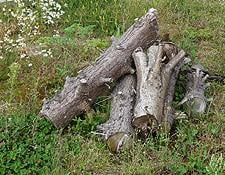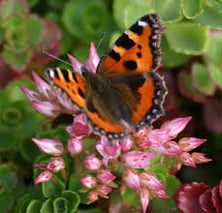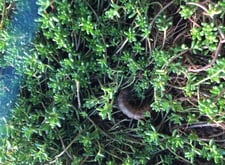In the summer of 2015, biodiversity was evaluated on sedum roofs in the Netherlands. In the process, the following species were observed: 3 types of diurnal butterflies, 29 types of nocturnal butterflies (moths), at least 4 types of wild bees, at least 7 types of hoverflies, 4 other insect types and 4 sorts of birds. The substrate layer was also investigated, and showed that this layer is also suitable for the pupal stage of many butterfly species. But will every roof scheme prove as successful? Can every green roof become biodiverse? Are there any differences between intensive and extensive green roofs? Let’s find out.
But first – what is biodiversity and why is it important?
The term biodiversity refers to the great variety of life on Earth at all levels, from genes to ecosystems, and the ecological and evolutionary processes that sustain it. Biodiversity includes not only species we consider rare, threatened, or endangered, but every living thing. Biodiversity is important everywhere; the species and habitats in your area, as well as those in distant lands all play a role in maintaining healthy ecosystems.
What is the connection between green roofs and biodiversity?
Wherever buildings are constructed, microhabitats are usually disrupted. Green roofs, like other constructed ecosystems (e.g., sewage treatment wetlands, bio swales for storm-water management, or living walls), mimic natural ecosystems to a certain extent in order to provide ecosystem services, and are potential new habitats for plants and animals in urban areas. For example, on top of one of the Ford Motor Company’s assembly plants (Dearborn, Michigan) one of the world’s largest green roofs, with a mix of 13 Sedum species, was planted in media less than 7.6 cm deep. Within two years of initial plant establishment, 29 insect species, 7 spider species, and 2 bird species were identified on the 42,900 m2 greened roof (Coffman and Davis 2005).
 Sedum green roof on top of Ford Motors Company, Michigan, US
Sedum green roof on top of Ford Motors Company, Michigan, US
What affects biodiversity on green roofs?
A few key factors influence the biodiversity of green roofs:
- Location of the roof: a greater variety and quantity of species can be expected on the roof of a building situated in a natural environment rich in a variety of species than on the roof of a building located in the middle of an industrial zone where the variety of species was comparatively limited.
- Roof configuration (edges, height and similar)
- Increased variety of plants (heterogeneity), types of growing substrates
- Small constructions on the roof that provide nesting opportunities (e.g. wooden nesting blocks, stones). This way, an environment that mimics a natural habitat is built to support a variety of birds, plants, invertebrates and other animals.
Can native plants be planted on the green roof?
YES, sometimes. But strong evidence shows that the majority of such projects fail, especially where we find a lack of maintenance. Such an approach clearly demands more specialist knowledge in the design phase and deeper growing mediums, while the maintenance component requires more labour, resources and expertise in the longer term. The designer has to be well aware of the implications of this kind of approach – and ensure clients are aware as well. Everyone involved with such a project should be clear that this is pioneering, not proven work (McIntyre, Snodgrass, 2010).
If the client requires a biodiverse roof with native or other very diverse plants, what advice can someone give him?
Selecting and obtaining the right plants can be difficult and time consuming, and the strict site specifics of such an approach often means that there are few lessons that can be taken from successful examples in other regions. Often, even if such plants are properly identified and available in the marketplace, they struggle in the harsh conditions on the roof. Even in a garden on a grade, using native plants to improve ecological functioning and provide a habitat is not simply a matter of choosing a few natives and adding them to the plant list. Restoration ecology requires scientific expertise and knowledge of horticulture, biology, soil science, climate, hydrology and how the various characteristics of a site interact. On a roof, there is nothing to restore (McIntyre, Snodgrass, 2010).
What are the plants grown on Urbanscape green roofs?
On Urbanscape green roofs, several sedum species are present, mixed in random patterns. In the first two years, evergreen sedums dominate, while in the later stage big-leaf sedums grow and mature over time. The composition of the vegetation is dynamic and varies. Having several sedum species in the blanket enables vegetation coverage through the seasons; and consequently, the overall visual impression changes with the season. Flowering of Urbanscape Green Roofs occurs mainly during the late spring and summer. Read more here.

How, when we talk about it, can biodiversity actually be evaluated, even proven?
Flower-visiting insects are one key indicator of the quality of the nature in a given area: the presence or absence of these animals is an important indicator of the state of the environment. Butterflies and bees in particular, as well as hoverflies and other flower-visiting insects, play an important role in serving the ecosystem, namely in pollinating both wild and cultivated plants. But evaluating the number of species that visit a green roof is only the first stage. Then one should also understand the relationship between the roof and that species, to determine whether the roof can be a functional environment for individual members of the species.
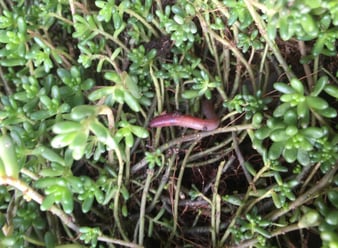
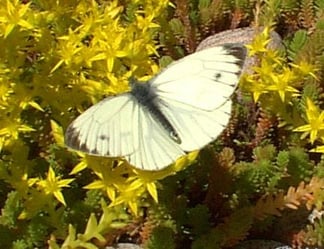
Is a biodiverse roof suitable for every roof?
NO, for the following main reasons:
- A biodiverse roof with a wide variety of plant species requires a deeper growing medium, which contributes to the weight load; often, building statics limit or prohibit such loads.
- A biodiverse roof is more expensive to plan and install both in the initial phase and over its lifetime, since it requires special maintenance and constant, intensive care and special knowledge.
- A biodiverse roof often fails due to the very specific vegetation demands of the environment.
In the end, can we claim that a green roof is a natural habitat?
NO. Even when it is a very carefully designed intensive roof, it still only mimics a natural habitat to a certain extent in order to provide some ecosystem-specific features and services.Enjoy a clean and focused screen where you can write without distraction.
Want to know more about Urbanscape Green Roof or Landscaping System?
Download one of our brochures below...
Download Brochures Green Roof SystemDownload Brochure
Landscaping System

